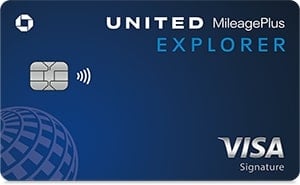How Much Is Travel Insurance in 2024?
Policies vary, but the average cost of travel insurance in 2024 is between 6-7% of your total trip expenses, according to NerdWallet analysis.

Many, or all, of the products featured on this page are from our advertising partners who compensate us when you take certain actions on our website or click to take an action on their website. However, this does not influence our evaluations. Our opinions are our own. Here is a list of our partners and here's how we make money.
According to NerdWallet analysis, the short answer to “How much does travel insurance cost?” is that it’s typically 7% of your overall trip cost. For example, travel insurance will cost you an additional $70 (roughly) for a $1,000 trip.
However, depending on your provider, travel insurance costs can range from 4%-16% of your trip cost. That means for that $1,000 trip, you might find coverage for as little as $40 or up $160 on the high end.
Costs vary across providers, level of coverage and factors like your age and destination. Let’s take a look at the different types of travel insurance, what influences its cost and the average cost of travel insurance.
Average cost of travel insurance by trip cost
The Nerds dove deep into over 50 real world coverage price points to get a clearer sense of typical travel insurance costs in 2024.
On average, travelers should expect to pay 6.87% of their total trip cost for travel insurance. The minimum you might expect to pay is 4.15%, but it can go as high as 15.8%.
Estimated trip cost | Average travel insurance cost across ages, depth of coverage and providers | Average travel insurance cost as % of trip cost |
|---|---|---|
$500 | $60.27. | 12.05%. |
$1,000 | $72.74. | 7.27%. |
$1,500 | $105.43. | 7.03%. |
$2,000 | $112.60. | 5.63%. |
$3,000 | $185.44. | 6.18%. |
$4,000 | $225.22. | 5.63%. |
$5,000 | $264.20. | 5.28%. |
$7,500 | $460.52. | 6.14%. |
$10,000 | $599.63. | 6.00%. |
$15,000 | $1,016.56. | 6.78%. |
$20,000 | $1,308.69. | 6.54%. |
$30,000 | $1,688.50. | 5.63%. |
$40,000 | $2,897.31. | 7.24%. |
$50,000 | $4,410.48. | 8.82%. |
How did we determine these ballpark travel insurance prices?
We broke it down by looking at four individual providers' cheapest basic plan and most expensive basic plan for two traveler age demographics: a 30 year old and a 60 year old.
The Texas-based travelers are taking a 10 day trip to Florida in the summer. Included providers in our analysis were:
According to the U.S. Travel Insurance Association, a national association of insurance carriers, the amount you can expect to pay for travel insurance will vary between 4% to 8% of your overall trip. This falls in the general range of our analysis, too.
If your vacation was $5,000, you’d be looking at somewhere between $200 and $400 for insurance. NerdWallet findings corroborate this range, with the average travel insurance cost for a trip at this price point being about $350.
Of course, as we describe below, the type of coverage you choose can greatly affect the cost of your insurance.
» Learn more: What does travel insurance cover?
Factors that affect travel insurance cost
So, how much is travel insurance? Several factors will influence the cost, like:
Type and extent of coverage.
The length of your trip.
Your destination.
The age of the policyholder.
Total trip cost.
Let’s say that you chose to purchase an insurance policy to cover any health care expenses you incur while traveling. This will reimburse you in the event you need to see a doctor, require hospitalization or have a variety of needs related to health care.
However, let’s say that you also chose to insure some of your trip costs; this means that, if need be, the policy will reimburse you for nonrefundable trip costs in case of a covered event. This will drive up the price of your policy overall.
Another factor that will affect the cost of your travel insurance is the coverage limits of your policy. These limits dictate how much you’ll be reimbursed in the event you need to use your insurance; the higher the amount, the more expensive your insurance.
» Learn more: The best travel insurance companies
More example costs of travel insurance
Here are some sample costs of travel insurance for a seven-day trip in the United States for two travelers ages 34 and 36. Full trip costs are estimated to be $2,000, and trip bookings have yet to be paid in full.
Policies include trip interruption coverage, travel delay coverage (up to $500) and emergency medical coverage.
Provider | Plan | Policy cost | Percent of total trip cost |
|---|---|---|---|
Safe Travels Voyager. | $72.70. | 3.6%. | |
RoundTrip Choice. | $152. | 7.6%. | |
Standard. | $81.08. | 4.1%. | |
Travel Select. | $112. | 5.6%. |
Types of travel insurance
In addition to the cost of travel insurance, we also need to talk about the different types of travel insurance. This is because the price you’ll pay will depend on the insurance you choose. Some policies — like those that allow you to cancel for any reason — can be more expensive than other, more limited, policies.
Common types of travel insurance include:
Different types of insurance will cover various things. Trip cancellation insurance, for example, will allow you to recoup a portion of nonrefundable costs when you’re forced to cancel your trip for a covered reason.
How to buy travel insurance
It’s simple to purchase travel insurance; you’ve probably seen dozens of ads for insurance whenever booking a flight or rental car.
However, it’s a better idea to get multiple quotes for policies. Insurance policy aggregators, such as Squaremouth, allow you to search a variety of different providers at once. You can then compare the coverage and price of each policy before choosing one that suits your needs.
» Learn more: What to know before buying travel insurance
Credit cards with travel insurance
If you’re looking into purchasing travel insurance, you may want to check which credit card you’re using to book your trip. Many of today’s popular travel credit cards offer complimentary travel insurance.
Cards such as the Chase Sapphire Preferred® Card offer primary rental car insurance; this means that the card will pay for any covered damage so that it doesn’t pass on to your personal insurance policy.
The types of insurance and total coverage vary according to the card, so you’ll want to check your individual policies.
Common coverage includes trip delay insurance, lost luggage insurance, rental car insurance and emergency medical insurance.
Popular cards that provide these types of coverage include:
Capital One Venture X Rewards Credit Card. (Benefits may change over time.)
The Platinum Card® from American Express. Terms apply.
In order to qualify for coverage, you’ll want to use your card to pay for any trip costs, including your airfare, lodging and rental cars.
The amount you’ll be reimbursed varies widely depending on which card you hold. For instance, the Chase Sapphire Preferred® Card provides coverage for up to $10,000 per person and $20,000 per trip for prepaid, nonrefundable travel expenses for covered trip cancellations.
These include airfare, accommodations and even tours.
The The New United℠ Explorer Card, meanwhile, offers far less coverage at just $1,500 per person and $6,000 per trip.
Of course, your trip will need to fall under covered circumstances, including sickness and severe weather.
» Learn more: Does my Chase credit card have travel insurance?
Cost of travel insurance recapped
It can make sense to purchase travel insurance, especially if you’re unsure about your vacation or worried about incurring expenses you can’t afford. Before buying a policy, you’ll first want to decide what type of insurance you’re looking to buy; some types of coverage cost much more than others.
You’ll also want to check to see if your credit card already provides complimentary travel insurance. Many popular travel cards offer this feature, though the limits may be lower than you might prefer.
Finally, do your homework before buying a policy. Gather quotes from multiple companies before making a decision, and remember the average price of trip insurance ranges from 4% to 8% of your total vacation costs.
For Capital One products listed on this page, some of the benefits may be provided by Visa® or Mastercard® and may vary by product. See the respective Guide to Benefits for details, as terms and exclusions apply.
Insurance Benefit: Trip Delay Insurance
Up to $500 per Covered Trip that is delayed for more than 6 hours; and 2 claims per Eligible Card per 12 consecutive month period.
Eligibility and Benefit level varies by Card. Terms, Conditions and Limitations Apply.
Please visit americanexpress.com/benefitsguide for more details.
Underwritten by New Hampshire Insurance Company, an AIG Company.
Insurance Benefit: Baggage Insurance Plan
Baggage Insurance Plan coverage can be in effect for Covered Persons for eligible lost, damaged, or stolen Baggage during their travel on a Common Carrier Vehicle (e.g., plane, train, ship, or bus) when the Entire Fare for a ticket for the trip (one-way or round-trip) is charged to an Eligible Card. Coverage can be provided for up to $2,000 for checked Baggage and up to a combined maximum of $3,000 for checked and carry-on Baggage, in excess of coverage provided by the Common Carrier. The coverage is also subject to a $3,000 aggregate limit per Covered Trip. For New York State residents, there is a $2,000 per bag/suitcase limit for each Covered Person with a $10,000 aggregate maximum for all Covered Persons per Covered Trip.
Eligibility and Benefit level varies by Card. Terms, Conditions and Limitations Apply.
Please visit americanexpress.com/benefitsguide for more details.
Underwritten by AMEX Assurance Company.
Insurance Benefit: Car Rental Loss & Damage Insurance
Car Rental Loss and Damage Insurance can provide coverage up to $75,000 for theft of or damage to most rental vehicles when you use your eligible Card to reserve and pay for the entire eligible vehicle rental and decline the collision damage waiver or similar option offered by the Commercial Car Rental Company. This product provides secondary coverage and does not include liability coverage. Not all vehicle types or rentals are covered. Geographic restrictions apply.
Eligibility and Benefit level varies by Card. Terms, Conditions and Limitations Apply.
Please visit americanexpress.com/benefitsguide for more details.
Underwritten by AMEX Assurance Company. Car Rental Loss or Damage Coverage is offered through American Express Travel Related Services Company, Inc.
How to maximize your rewards
You want a travel credit card that prioritizes what’s important to you. Here are some of the best travel credit cards of 2025:
Flexibility, point transfers and a large bonus: Chase Sapphire Preferred® Card
No annual fee: Wells Fargo Autograph® Card
Flat-rate travel rewards: Capital One Venture Rewards Credit Card
Bonus travel rewards and high-end perks: Chase Sapphire Reserve®
Luxury perks: The Platinum Card® from American Express
Business travelers: Ink Business Preferred® Credit Card
1x-10x
Points60,000
Points1x-5x
Points100,000
Points1x-2x
Points50,000
Points




